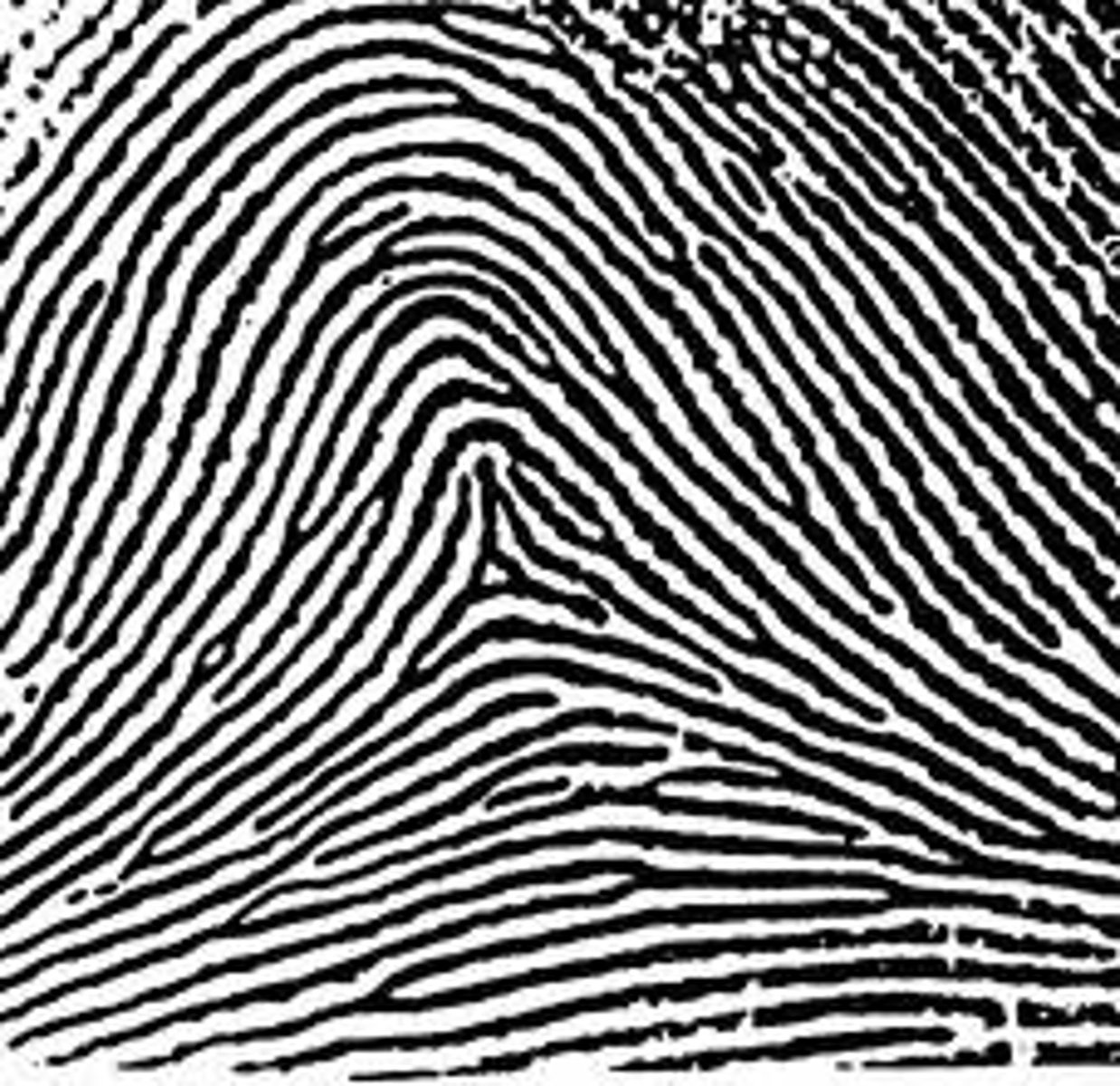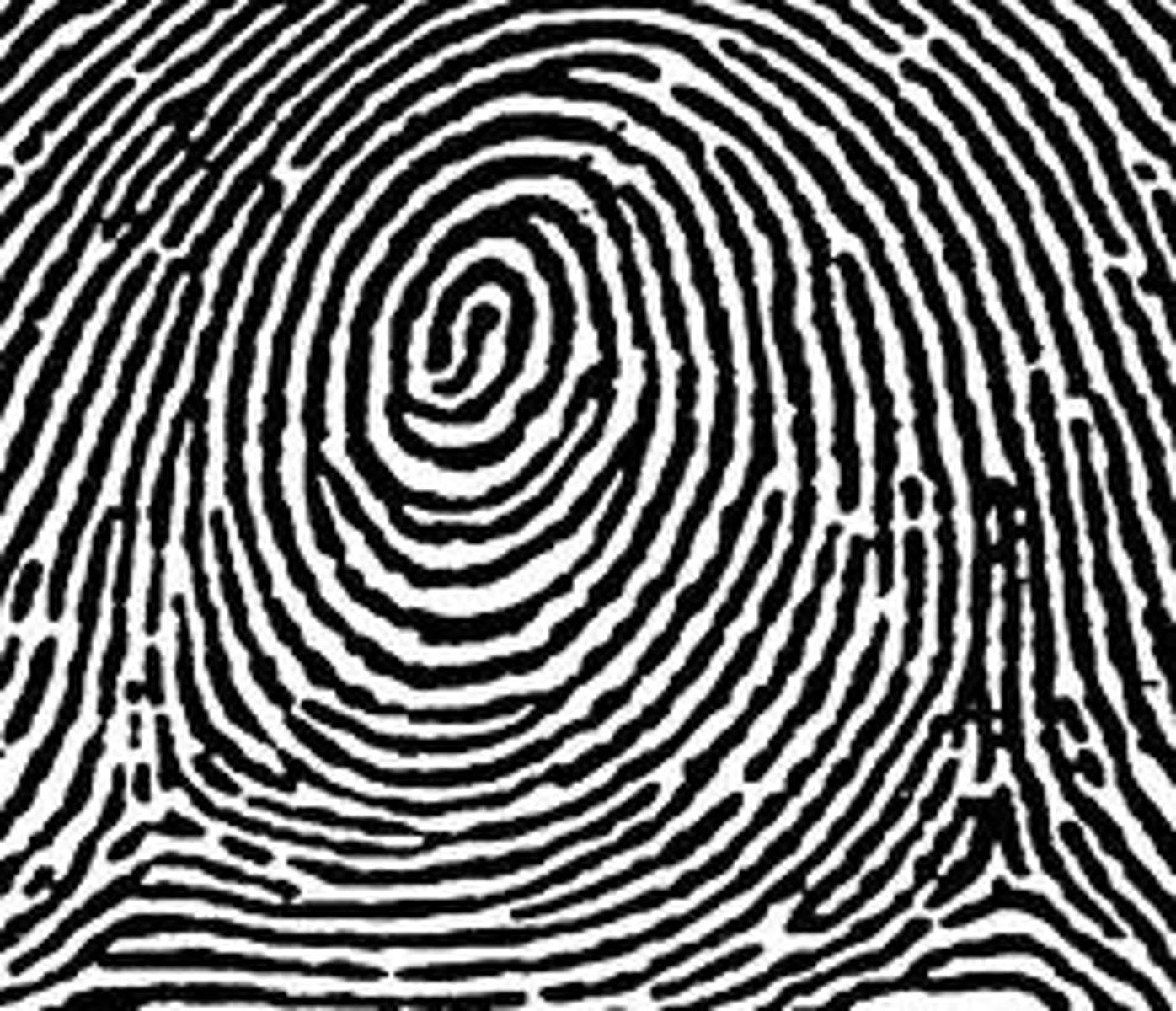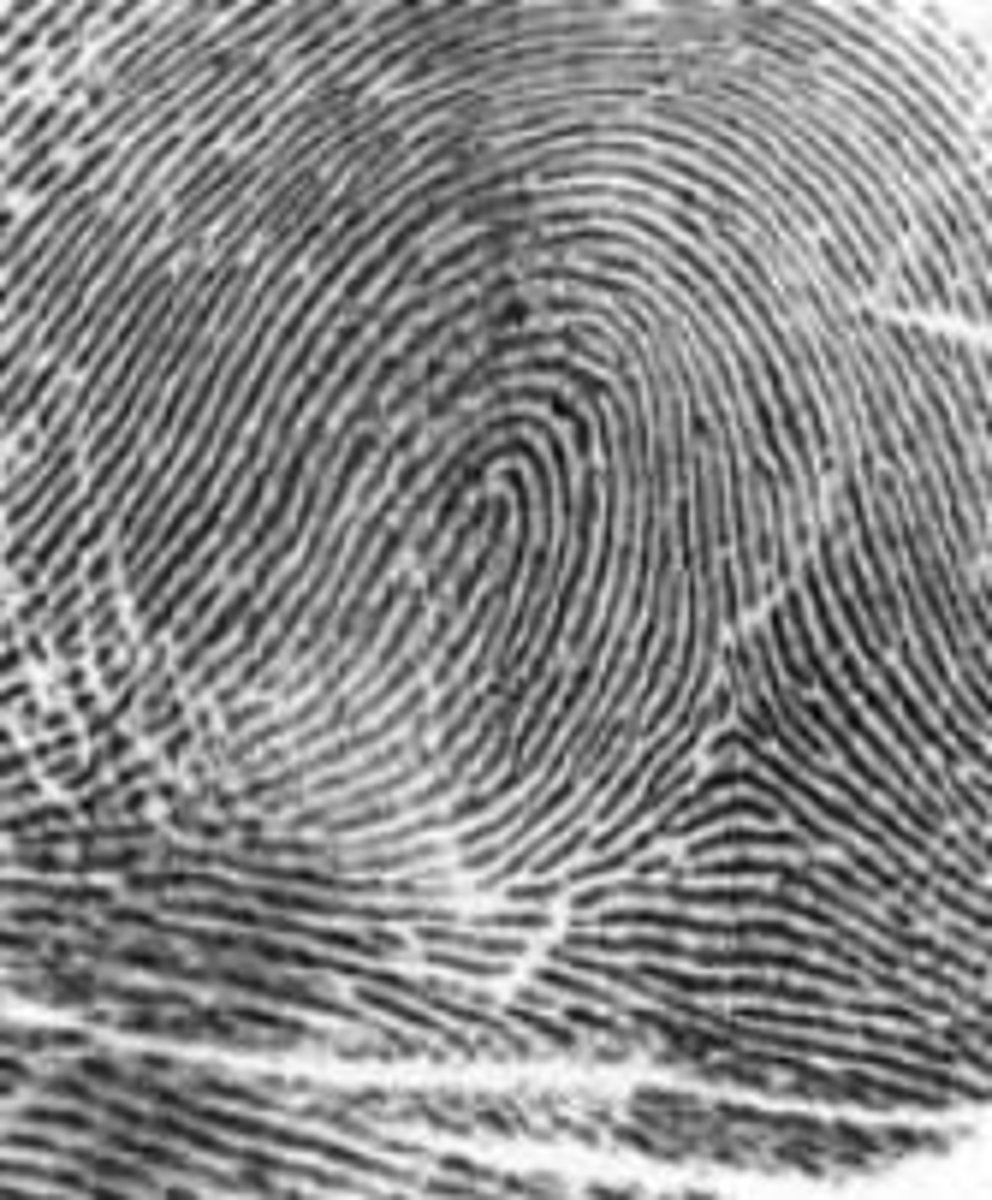PLTW: Biomedical Science Unit 1 TEST
1/79
There's no tags or description
Looks like no tags are added yet.
Name | Mastery | Learn | Test | Matching | Spaced |
|---|
No study sessions yet.
80 Terms
5 steps to a crime scene investigation
1. Collect evidence
2. Sketch
3. Interview
4. examine
5. photograph
4 parts to a crime scene
sketch, legend, key, scale
3 primary fingerprint ridge patterns
arch, whorl, loop
arch

whorl

loop

7 steps to experimental design
1. Identify the problem or question
2. Predict a solution to the problem or an answer to the question
3. Design an experiment to test your hypothesis
4. Carry out the experiment
5. Analyze the data and observations
6. State the conclusion
7. Complete a summary paragraph
Independent variable
Variable that is varied or manipulated by the researcher.
Dependent variable
Measurable effect, outcome, or response in which the research is interested. results vary based on the independent variable.
Biomedical Science
The application of the principles of the natural sciences, especially biology and physiology, to clinical medicine.
Control Group
The group in an experiment that serves as a comparison against the experimental group where the independent variable is applied.
Experiment
A research study conducted to determine the effect that one variable has upon another variable.
Forensic Science
The application of scientific knowledge to questions of civil and criminal law.
Hypothesis
Clear prediction of the anticipated results of an experiment.
Negative Control
Control group where conditions produce a negative outcome.
Personal Protective Equipment
Specialized clothing or equipment, worn by an employee for protection against infectious materials (as defined by OSHA).
Positive Control
Group expected to have a positve result, allowing the researcher to show that the experiment set up was capable of producing results.
Algor Mortis (T)
cooling of the body to the surrounding temperature after death.
Rigor Mortis (S)
stiffness of the body that sets in several hours after death.
Lividity
helps determine the position of the body at time of death.
The Glastier equation
98.4-recorded temp/1.5hours=Hours Since Death
Types of Blood
Type A, Type B, Type AB, Type O
Clumping with a serum that is Anti-A indicates
(same with Anti-B)
that the blood type has "A" in it
that the blood type has "B" in it
cuticle
What is the outermost layer of the hair?
cortex
Home to pigment containing granules - gives hair color.
medulla
This layer may be continuous, discontinuous, fragmentary, or even absent. The diameter of the ____________________ is a useful characteristic in the identification and comparison process.
Does the Glastier equation work for all ambient temperatures? Why or why not?
No, the Glastier equation does not work for all ambient temperatures because the hours since death is thrown off by very high or low temperatues.
What did the blood stain patterns left near Anna Garcia tell you about her death?
If blood is dropped from a higher height, then the blood spatter diameter increases as a result of the kinetic energy and force of gravity as blood falls to the Earth. (The blood at the crime scene was dropped from table height)
Adenine
A component of the nucleic acids, energy-carrying molecules such as ATP, and certain conenzymes. Chemically, it is a purine base.
Chromosome
Any of the usually linear bodies in the cell nucleus that contain the genetic material.
Cytosine
A component of nucleic acids that carry hereditary information in DNA and RNA in cells. Chemically, it is a pyrimidine base.
Deoxyribonucleic Acid (DNA)
A double-stranded, helical nucleic acid molecule capable of replicating and determining the inherited structure of a cell's proteins.
Gel Electrophoresis
The separation of nucleic acids or proteins, on the basis of their size and electrical charge, by measuring their rate of movement through an electical field in a gel.
Gene
A discrete unit of hereditary information consisting of a specific nucleotide sequence in DNA (or RNA, in some viruses).
Guanine
A component of nucleic acids that carry hereditary information in DNA and RNA in cells. Chemically, it is a purine base.
Helix
Something spiral in form.
Model
A simplified version of something complex used, for example, to analyze and solve problems or make predictions.
Nucleotide
A building block of DNA, consisting of a five-carbon sugar covalently bonded to a nitrogenous base and a phosphate group.
How do scientists isolate DNA to study it?
DNA can be extracted from cells by
1. obtaining cells
2. using detergent to break down the cell and nuclear membranes
3. adding isopropyl alcohol to separate the rest of the cellular materials
How does DNA differ from person to person?
Only the sequence and number of bases separates all organisms.
Human DNA differs only between humans of 0.1%
only identical twins have the same DNA sequence
Restriction Enzyme
A degradative enzyme that recognizes specific nucleotide sequences and cuts up DNA.
Restriction Fragment Length Polymorphisms (RFLPs)
Difference in DNA sequence on homologous chromosomes that can result in different patterns of restriction fragment lengths (DNA segments resulting from treatment with restriction enzymes).
Thymine
A component of nucleic acids that carry hereditary information in DNA and RNA in cells. Chemically, it is a pyrimidine base.
Autopsy
An examination of the body after death usually with such dissection as will expose the vital organs for determining the cause of death.
Bibliography
A document showing all the sources used to research information.
Citation
A written reference to a specific work (book, article, dissertation, report, musical composition, etc.) by a particular author or creator which identifies the document in which the work may be found.
Documentation
The act of creating citations to identify resources used in writing a work
Medical Examiner
A physician who performs an autospy when death may be accidental or violent. He or she may also serve in some jurisdictions as the coroner.
Autopsies are performed in which 4 circumstances
1. Unexpected deaths/death when not under medical treatment 2. Death resulting from any type of injury 3. Suspicious circumstances 4. Other circumstances as outlined by state laws
What medical profession performs autopsies?
forensic pathologist (medical examiner)
5 manners of death
1. natural 2. accident 3. suicide 4. homicide 5. undetermined
Forensic autopsy
try to find cause of death for police investigation
Clinical Autopsy
usually performed in hospitals, determines cause of death for study purposes
What is DNA?
DNA is the hereditary material in humans and all living organisms. It's a molecule and is holds the imstructions for building all living things.
Give an example of a base pair. Also give the number of bonds the base pair has.
A and T. 2 pairs.
How many base pairs does Cytosine and Guanine have?
3.
C pairs with _______.
G.
T pairs with _______.
A.
What is a nucleotide made up of?
A phosphate, deoxyribose sugar, and a base pair.
What is the difference between the purines and the pryimidines?
Purines have two carbon-nitrogen rings and four nitrogen atoms. Pryimidines have one carbon-nitrogen ring and two nitrogen atoms.
What two base pairs are purines?
Adenine and thymine.
What two base pairs are pyrimidines?
Cytosine and gu
Why do purines bond with pryimidines in the DNA ladder?
They are opposite poles and have the same number of hydrogen bonds.
Activity 1.2.3: What did the results of gel electrophoresis show?
They showed that Anna Garcia was at the crime scene.
Explain the role that restriction enzymes and gel electrophoresis play in DNA profiling.
Restriction enzymes cut the DNA at specific nucleotide sequences and gel electrophoresis seperates nucleic acids or proteins by size.
What would happen if the gel was placed with the DNA starting closest to the positive electrode? Explain.
The process wouldn't work because the DNA would run backwards.
What do restriction enzymes do?
They cut DNA at specific nucleotide sequences.
What is an autopsy?
The medical examination of a dead body to determine the cause of death.
Give an example of a natural manner of death.
Cancer.
Give an example of an accident manner of death.
Someone falls off a ladder.
Give an example of a homicide manner of death.
Murder, gunshot wound.
Give an example of a suicide manner of death.
Self-inflicted wounds.
Does one have to have any medical qualifications to be a coroner?
No. You just have to be elected for the job.
What is a diener?
A person responsible for handling the dead body.
Give an example of two human body systems that work together to perform a specific function. Explain.
The digestive and urinary systems. The digestive absorbs and breaks down food coming into the body and then the urinary system gets rid of the waste.
Who's fingerprint was found at Anna Garcia's crime scene?
Alex Garcia
What does HIPAA stand for?
Health Insurance Portability and Accountability Act
What is HIPAA?
A laws enacted in 1996 designed to give the patients rights.
What are base pairs also called?
Nucleotides
True/False: Chromosomes are composed of genes and chromosomes make up DNA.
True